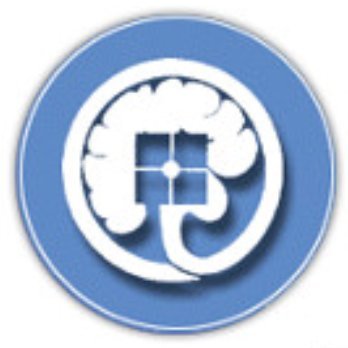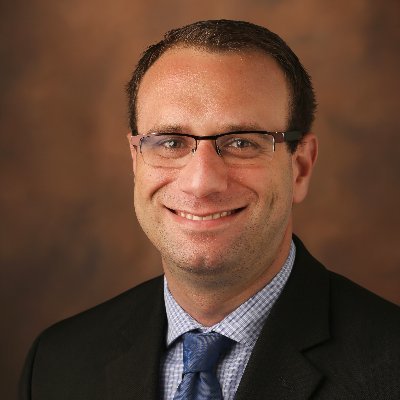
Akash Mishra
@Akash_Mishra7
Followers
236
Following
216
Media
16
Statuses
112
MD/PhD Student @ZuckerSOM • NIMH NRSA F30 • @HofstraU ‘19 • Optimizing & expanding DBS indications using human iEEG and neural oscillations
New York, USA
Joined March 2022
New from @MillerLabMIT: To get back on track after a distraction, the brain appears to employ a rotating traveling wave, a new study by MIT neuroscientists finds. https://t.co/dwNPhEiwpn
@ScienceMIT @mitbrainandcog #neuroscience #cognition
picower.mit.edu
To get back on track after a distraction, the cortex appears to employ a rotating traveling wave, a new study by MIT neuroscientists finds.
7
23
88
Great start to #2025CNS in LA😎 with the @CNSResidents Committee Meeting! So great to catch up with old friends, show some @NorthwellNsurg pride, and make new connections! Looking forward to a fantastic conference! @AlonKashanian @CNS_Update @NSTumorSection #Neurosurgery 🧠🔥
0
3
29
New preprint on the role of insular traveling waves in memory and behavior, using depth recordings from neurosurgical patients, with Chengyuan Wu, @SameerShethMD, and @neurojosh. https://t.co/snnhnt1uEH
biorxiv.org
The insula is a critical brain region that plays a foundational role in adaptive human behaviors, with diverse subregions performing distinct functional roles. However, explaining how these insular...
6
7
8
Cross-region neuron co-firing mediated by ripple oscillations supports distributed working memory representations. https://t.co/IRXHavv8m3
#biorxiv_neursci
0
12
16
📢Calling ASSFN Members and Stereotactic and Functional Neurosurgery Resident/Fellows Don’t miss the next ASSFN Town Hall! 🗓️Wednesday, 9/24 | ⏰ 7 PM CT Register now: https://t.co/CxLNU4c5FO
#Neurosurgery #FunctionalNeurosurgery #NeuroInnovation #NeuroSurgeryCommunity
1
3
6
Are you a neurosurgery resident or medical student interested in Functional Neurosurgery, but seeking more research or clinical mentorship than what's at your own institution? Learn more about the new #ASSFN AMPLify Mentorship Program. This is our second year in the program, and
2
19
107
Congrats to the 2025 NREF Medical Student Summer Research Fellows! These rising stars are shaping neurosurgery’s future. 2026 applications open Sept. 1. #medicalstudent #MedEd #MedTwitter
https://t.co/5UgmXoV43X
@MegBhimreddy @allieheinemann @minjicindykoh @SaketMyneni
nref.org
Neurosurgery Research & Education Foundation NREF IN ACTION DONATE TODAY Neurosurgeons Support the next generation of neurosurgeons via an unrestricted donation or a mentor fund. In-Training Neuros...
0
9
19
We’re incredibly proud to share this work with you: https://t.co/eeLSyyJx62 A BIG thank you to my research mentors @Steph_Bickel and Ash Mehta, to the @NIMHgov for supporting my work, to @ZuckerSoM @NorthwellHealth @NorthwellNsurg, and to you for reading along! (fin)
science.org
HFOs are bursts of brain activity that coordinate the processing and memory integration of the continuous world around us.
1
0
2
In summary, these findings suggest that HFOs across the hippocampal-cortical memory network represent a powerful coordinating mechanism. They may guide how our brains segment, encode, and retrieve rich, continuous episodic memories from our everyday lives (10/n)
1
0
1
The strength of motif reactivation during replay and retrieval was related with whether participants later remembered the event. We also found that these unique motifs lingered for three subsequent replay periods. Hence, HFOs may help us bind new memories to older ones! (9/n)
1
0
1
Co-HFO motifs showed specificity for events and re-occurred not only in the immediate post-boundary “replay period” but also during later recall. This links co-HFOs with the reinstatement of memories during consolidation and retrieval. (8/n)
1
0
1
We then identified “co-HFO motifs,” or event-specific spatiotemporal patterns of co-HFOs that occurred during initial event viewing. We looked to see if these motifs re-emerged at event boundaries (replay) and during free recall (retrieval). (7/n)
1
0
1
Further, co-HFO locations changed based on the “granularity” of the segmentation. Major event boundaries were more associated with co-HFOs in higher-order association cortices while simpler boundaries (e.g. camera angle changes) largely activated lower-order visual regions. (6/n)
1
0
1
We also looked beyond the hippocampus and found that coincident HFOs (co-HFOs) across the hippocampal-cortical network also increase after event boundaries. Interestingly, these events predominate in cortical regions that have been previously shown to underlie event segmentation.
1
0
0
Our human intracranial recordings allowed us to localize these HFO increases to the right-anterior hippocampus and the CA1 subfield. This specificity supports models where the anterior hippocampus integrates information across longer timescales. (4/n)
1
0
1
HFOs are a highly-synchronizing phenomenon, and we found that HFOs increase in activity ~2sec after the brain detects an “event boundary,” or timepoints where one “chunk” of an experience ends and another begins. This is a critical window for memory consolidation, or “replay.”
1
0
1
When we go about our days, we experience a continuous stream of information. But when we recall it later, we tend to find that we’ve “chunked” this experience into individual, meaningful episodes. This process is called event segmentation. (2/n)
1
0
1
How does the human brain process the continuous world around us and transform it into distinct memories? Our latest research, recently published in @ScienceAdvances, uncovers how brain waves called high frequency oscillations (HFOs) may support this amazing feat! (1/n)
1
2
6
Nature Hippocampal representations drift in stable multisensory environments https://t.co/uilM78yCqs
nature.com
Nature - Tracking of individual place cells in mouse CA1 shows that representational drift is not influenced by changes in environment or behaviour, and is lower for more excitable place cells.
0
9
24
Our new study in The Spine Journal raises some important questions about robotic spine surgery implementation: 🔴 58-minute average delays during complications 🔴 1 in 3 cases abandoned the robot mid-surgery
1
1
4












